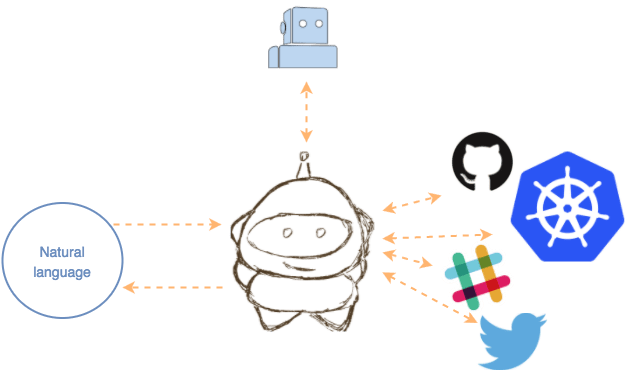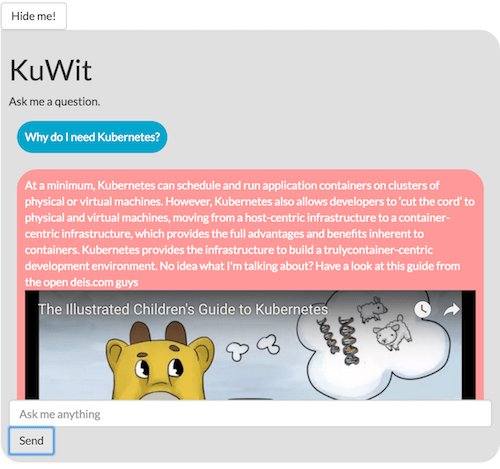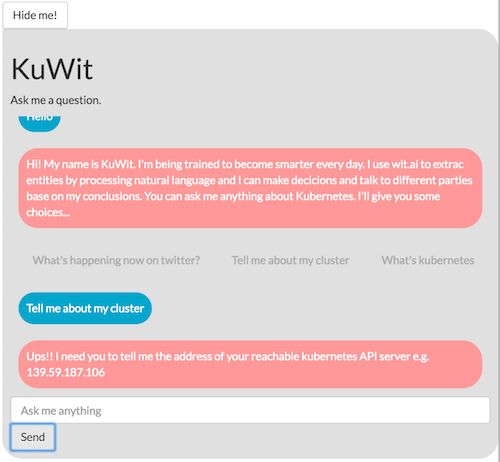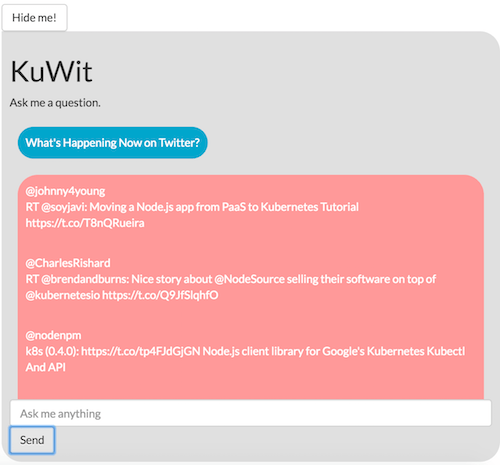It is not a secret that the industry is betting hard on building AI engines using the power of machine learning and big data to provide the foundation for delivering extremely personalized user experience. Platforms like FBLearner Flow, Google TensorFlow, or services like Microsoft Cortana, Google Machine learning or IBM Watson are just a few examples.
One the many possibilities that arises is building chatbots based on natural language processing for changing the way humans interact with computers and reducing the friction between them when offering a service.
A great example on this line is wit.ai. Wit is a service that helps you to build your conversational app by using Natural Language Processing (NLP) to understand and extract meaningful information out of the user input.
If you haven’t heard of it I really encourage you to give it a try. You can build a recipe for your bot and test it through the browser on the same site in minutes.
Putting things together
At Capgemini we have been experimenting with containers and building solutions around Mesos or Kubernetes for a while now.
These technologies are in a certain sense an abstraction over the underlying infrastructure. They completely change the way that humans interact with datacenters, clusters, machines and the way we deal with the orchestration of the apps. It is now more natural for us.
In accordance with this idea it would also be possible to go a bit farther and to change the way we interact with these platforms by making it easier and more natural for the human to transmit his desires.
Introducing KuWit
KuWit.io is the AI bot who knows everything about Kubernetes.

It’s built on the shoulders of wit.ai and is becoming smarter every day by training and using Natural Language Processing.
KuWit relies on Wit for making predictions and extracting entities from natural language and then executes actions and retrieve information from external APIs in order to finally deliver a meaningful user output.
At the moment KuWit has three main functions:
- Teach about Kubernetes

- Interact with your Kubernetes cluster.

- Follow the latest news about Kubernetes on the internet.

You can check it out and use it as a service on KuWit.io or just clone it from https://github.com/capgemini/kuwit and customise it and deploy it on your own platform.
Future plans
-
Make it smarter by training it on wit.ai.
-
Add ability to communicate with slack and more third-party services.
-
At the moment KuWit runs in a single Docker container. We should be able to provide a PoC with a serverless approach with something like s3 for the static frontend + lambda for the backend under demand.
If you want to know more about what we do come and see us at Container Camp UK on September 9th